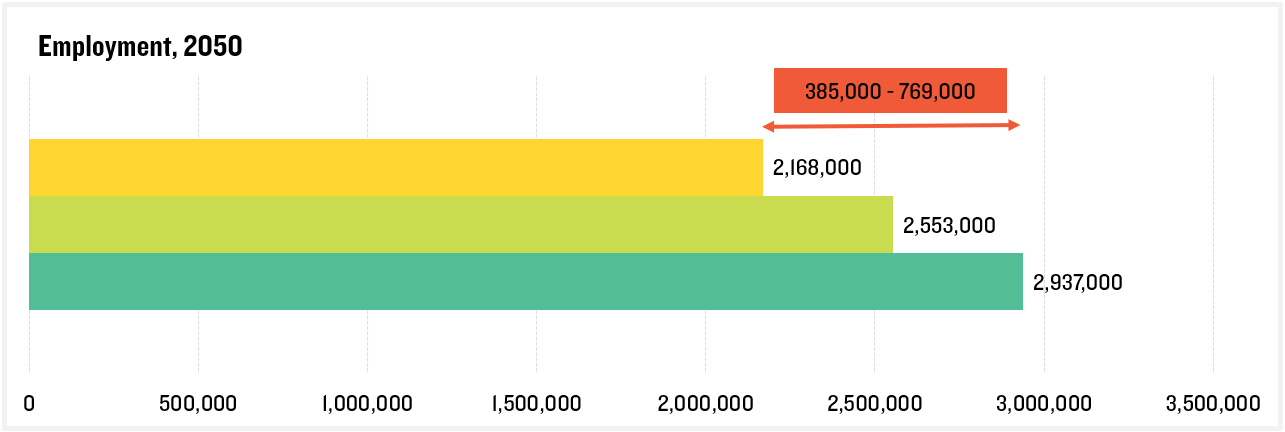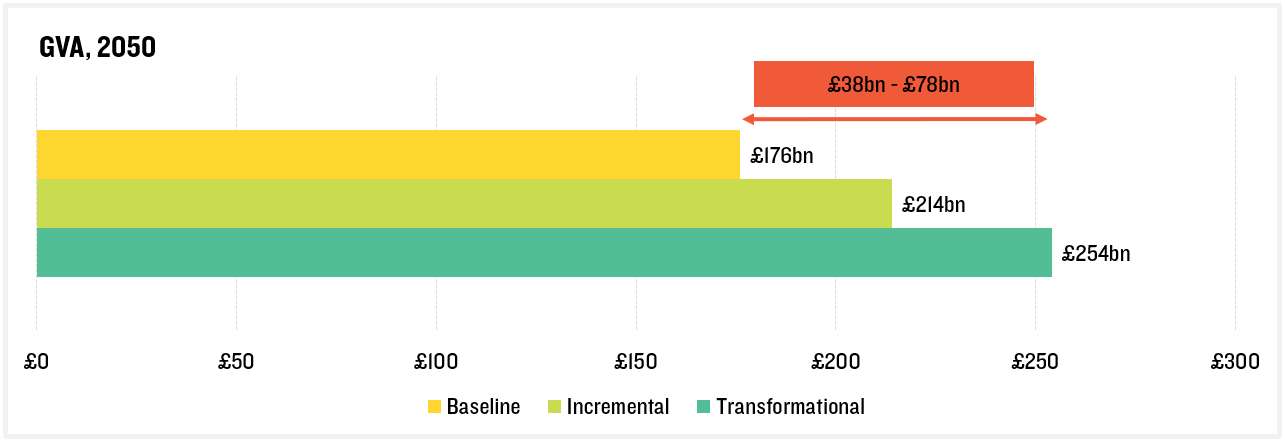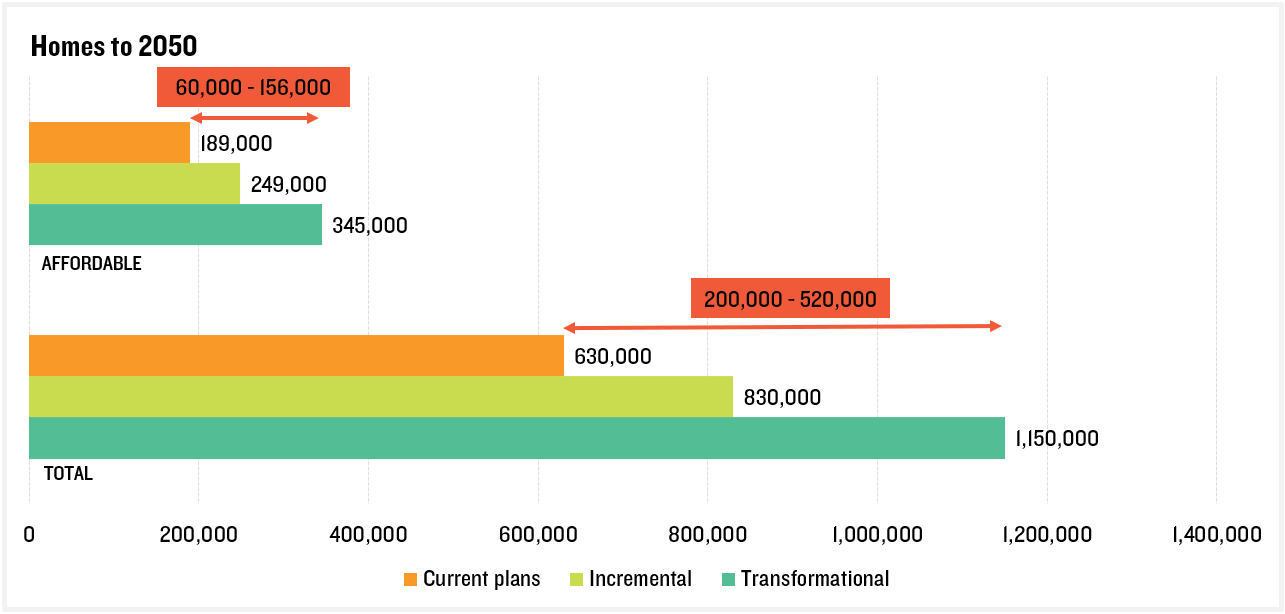If we want a better future, we need to plan for … infrastructure, housing, the environment and the needs of businesses and universities at the same time…. Local councils cannot do this on their own …. Government needs to play a supporting role to bring together a strategic approach at the Arc level to support better planning and ultimately better outcomes for the economy, environment and communities.
A mere 12 months ago, Government could not have been clearer on why it was so important for Government to have a role in a Spatial Framework for the OxCam Arc. This was founded on years of evidence gathering, research, reports and policy recommendations from organisations including the National Infrastructure Commission and culminated in the publication of a draft Spatial Framework in summer last year; the first of three. It was abundantly clear that any strategy to maximise the Arc’s potential as a world-leading knowledge cluster needed to be driven by a long-term and co-ordinated strategy, which supported the infrastructure, economic and housing that the Arc needs.
The Government’s first Spatial Framework consultation had faced some criticism; there were concerns expressed that important topics, including housing and the environment, had not been given proper consideration. But similar criticisms can be made of most policy consultations and most people expected Government to continue with a proposal it had already invested so much in.
The warning signs first came when the OxCam Arc was omitted from the Levelling Up White Paper
[1] published in February 2022 (all 332 pages of it), including specific profiles on the East and South East regions. Later in February, a report to elected Members of South Cambridgeshire District Council
[2] concluded that:
it became clear that the government does not wish to see the Ox Cam Arc as a project driven by central government…. discussions with DLUCH officials have indicated that ministers believe that while they support the continuation of the project, it should be locally led, focusing on things that local leaders believe are priorities.
Although a formal Government response to the first Spatial Framework is awaited, the future of a spatial framework for the Arc is clearly uncertain. The Financial Times referred to the OxCam Arc as having been “
shelved”
[3]
So what?
It is no secret that the Arc’s disconnected infrastructure and lack of affordable housing undermine its economic growth potential; without being able to attract and retain the right labour force, and without labour and businesses being able to move freely across the Arc, the area will not truly rival Silcon Valley as a globally-renowned hub of innovation. It may also lead to exacerbated problems of congestion and pollution as people are forced to live more distant from their jobs, with a whole host of knock-on economic and environmental impacts. But the current nature of planning means that jobs, infrastructure and housing are generally planned for at a local level, either by authorities on their own or, in a few cases, in joint working with their neighbours.
Economic work prepared for the National Infrastructure Commission in 2016 by SQW and Cambridge Econometrics
[4] made exactly these observations when it looked at case studies of other economic clusters in the UK and around the world (including Hong Kong and Europe) and concluded that:
- Scale and connectivity are important in developing specialist labour markets which support the growth of knowledge-intensive companies;
- The scale and quality of research and business activity in the OxCam Arc is ‘huge’ but the area is currently very disjointed compared with international comparators;
- Governance is critical in relation to the scale and pattern of growth; and
- "It would be folly to assume that long term economic growth can only be incremental (and therefore reasonably predictable) in both geography and composition."
But the absence of a joined-up strategy has real, quantifiable impacts too. The SQW economic work assessed three scenarios for the Arc, forecasting economic growth to 2050 under baseline, incremental and transformational growth scenarios. The latter scenario assumed “The study area moves towards the vision of becoming a functional economic corridor and a globally competitive knowledge cluster”; similar to the Government’s vision for the Arc to be “one of the most prosperous, innovative and sustainable economic areas in the world”, as set out in its Spatial Framework consultation.
Under a transformation scenario, the Arc was forecast to see nearly 3m jobs in 2050; depending on whether the region sees baseline
[5] growth or incremental
[6] growth this could mean around 385,000-769,000 jobs could be foregone due to the lack of a joined-up strategy. For economic output (GVA) the amount potentially ‘lost’ could be between £38bn and £78bn.
Figure 1: Employment and GVA in the Arc in 2050

 Source: Based on early definition of the ‘CaMKOx corridor’ which is slightly different to the current defined geography if the OxCam Arc.
Source: Based on early definition of the ‘CaMKOx corridor’ which is slightly different to the current defined geography if the OxCam Arc.The lack of an OxCam Arc strategy is also likely to have implications for housing delivery – and especially affordable housing delivery. Analysis by Lichfields shows that, if current planned levels of housing continue, the Arc will see around 630,000 homes (of which an estimated 189,000 would be affordable) delivered by 2050. But to support incremental growth however the Arc will need 830,000 homes, and to support transformational growth it will need 1.15m. The difference amounts to around 60,000-156,000 affordable homes and 200,000-520,000 homes overall. As it stands, there can be little confidence that the current local planning system will embrace the strategic, Arc-wide, perspective necessary to ensure economic potential is properly planned for, or that the homes necessary are incorporated within emerging and future local plans.
Figure 2: Estimated difference in housing delivery under current plans and future economic scenarios
 Source: Lichfields analysis based on SQW/Cambridge Econometrics
Source: Lichfields analysis based on SQW/Cambridge EconometricsInterestingly, the major urban centres of the OxCam Arc all fall outside the 20 largest urban centres that are subject to the 35% ‘urban centres uplift’ in the Standard Method for local housing need, and, as we
showed, are (with the exception of Peterborough) projected to lose ground in population terms compared to other urban areas.
What next?
In the era of localism, a Government-led spatial framework for the region was never going to be straightforward, but the fundamental rational for having a strategy remains stronger than ever. Leaving it for individual Councils to take forward raises real doubts over how that could be achieved. Councils lack resources and some of the powers necessary to address genuinely strategic matters
[7]. Voluntary strategic planning initiatives (such as those in Essex, Hertfordshire, and South Hampshire) have so far failed to deliver tangible strategies after several years. The duty to cooperate, with all its well-known limitations, is a mechanism more geared to addressing issues with immediate neighbours rather than a regional-scale growth corridor.
An official response from Government is awaited, with the FT reporting it as saying that it would provide more information on last year’s consultation “in due course”. But there is clearly a lot at stake for the Arc and – given its global significance – for the economic success of the whole country.
[1] Available here
[2] Available here. The OxCam Arc Update is Agenda Item 12 pp 301-302
[3] Financial Times article is here (£)
[4] Available here
[5] Where current housing delivery continues and current transport projects are implemented, but no further strategic scale infrastructure is realised
[6] Where housing delivery increases above current levels and some further transport and infrastructure investments are made beyond current commitments
[7] The FT quotes the leader of South Cambridgeshire Council as saying: “The implication from Gove is that they want us local council leaders to take it forward — but we have no money or power”





